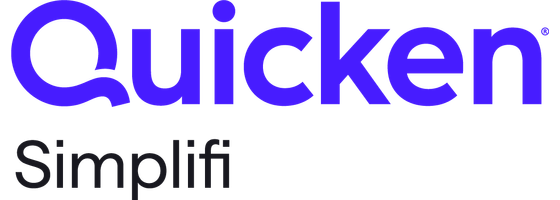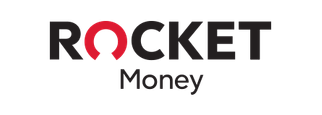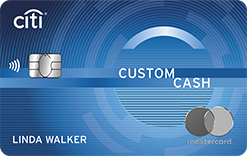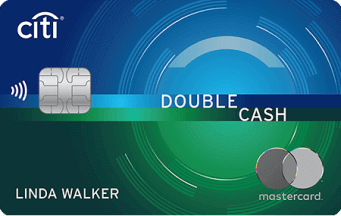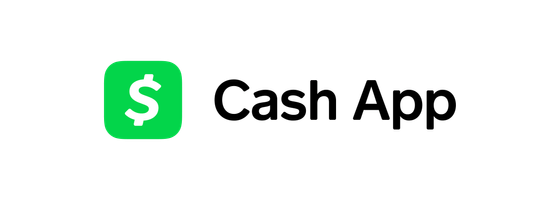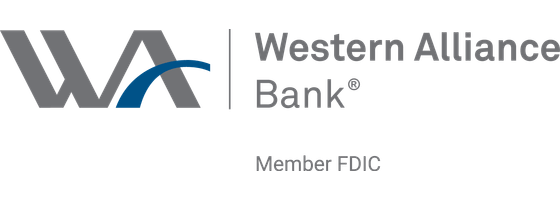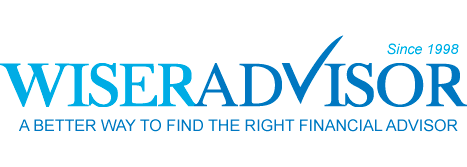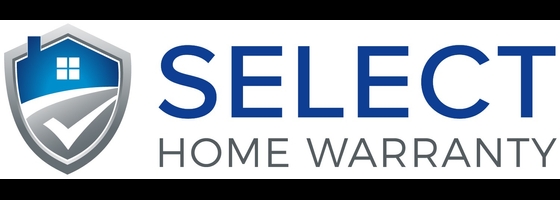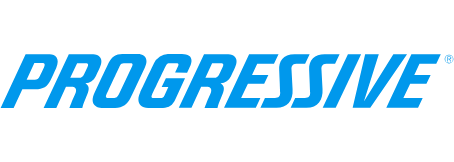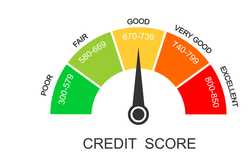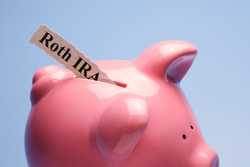Saving money is a two-part process by which you find ways to cut back on spending and then redirect those funds for future use. The ability to shave a few cents here, a few dollars there, then set those savings aside, makes life feel less stressful and your financial future less daunting.
The notion of getting more “bang for your buck” is empowering, and the potential to create a savings cushion for an unexpected expense or addition to retirement savings is the stuff of dreams. Here are some tips to help make your financial dreams come true.
1. Create a budgeting plan.
Creating a personal budget can seem intimidating, but it doesn't have to be, especially if you take it step by step.
- Track your finances. Keep a monthly record of income and expenses to give you an accurate picture of your spending habits. Track all spending, whether you think it’s essential or not. One simple method involves keeping a written record of all your expenses, such as by using a notebook or an app on your phone. You can also create a simple spreadsheet or use online tools to track spending.
- Build a budget. Research and use an app or budgeting tool to create and organize a monthly income and spending plan. Monarch Money lets you track spending, account balances, and investments all in one place. One popular budget model involves the 50-30-20 rule, in which you put 50% of your money toward needs, 30% toward wants, and 20% toward savings.
- Follow the budget. A budgeting app or tool enables you to keep track of income and spending to ensure you don’t overspend and take on debt, which is how most people get into trouble. Simplifi by Quicken lets you connect your accounts, create a budget, track spending, save, and project cash flow for less than $30 per year.
- Keep at it. Make following a budget part of your monthly routine. Try to identify areas where you can cut back. Use your budget to plan ahead, save for the future, and guard against financial surprises.
2. Automate transfers
Automating the way your money moves around helps avoid late fees, encourages saving, and makes your financial life more efficient. Banks and financial services platforms, including PayPal and Cash App, have free tools to help you automate many of your monthly financial tasks.
CashApp
Max transaction limit
Up to $1,000 per 30-day period for unverified accounts, may be higher for verified users
Pros:
- Funds can be directed into a connected bank account or optional Cash Card debit card.
- Cash deposits allowed through participating retailers.
- Direct deposit customers may receive paychecks up to two days early.
Cons:
- Funds can take multiple days to arrive in connected bank accounts.
- Instant transfer withdrawals require paying a fee.
- Direct deposit. You can have your paycheck, tax refunds, childcare payments, and just about any regular source of income automatically deposited in your account, saving you time and money.
- Bill payment. Paying bills is a repetitive task and missing a payment because you were too busy can cost you money. Set up as many automatic bill payments as you can. Prime candidates for automation are recurring bills for the same amount, although some systems will let you automatically pay the minimum payment or current balance.
- Automatic savings. Have a set amount deposited in a savings account on a regular basis. Treat savings like any other bill, one that must be paid on time every month.
- Automatic investments. Some platforms, including the above-mentioned PayPal and Cash App, let you buy stocks or even purchase cryptocurrency automatically.
3. Pay off high-interest debt
Start by having a plan to pay off high-interest debt as soon as possible. Your plan can be to pay off the highest interest rate debt first while making minimum payments on other debt. You can also consolidate debt and pay it off with a lower interest rate personal loan.
Another technique involves taking out a balance transfer card with very low (even zero) percent interest for a set time period. No matter how you handle high-interest debt, set and stick to a budget and avoid new debt while you pay off old balances.
|
| | |
| | |
balance_transfer_intro_apr,balance_transfer_intro_duration | balance_transfer_intro_apr,balance_transfer_intro_duration | balance_transfer_intro_apr,balance_transfer_intro_duration |
| | |
4. Shrink your utility bills—or avoid letting them grow
There are several easy ways to shrink electric and gas bills that are neither costly nor complicated.
- Turn off lights. Conserve energy by turning off lights when not in use. Use photocells and timers to turn lights on at dusk and off several hours later without the need to remember to take action.
- Unplug electronics. You won’t save much unplugging lamps, phone chargers, and most small appliances, but pulling the plug on unused electronics such as DVD players, VCRs, and turntable setups might be worth the trouble.
- Enable sleep mode. For seldom-used electronics that have a sleep mode, using that setting can also save over the long haul.
- Lower/raise the thermostat. Smart thermostats are especially helpful when it comes to heating and cooling costs, but thermostats with multiple timer settings can also save money, as can simply lowering (or raising) the temperature when you go to bed or leave the house for the day.
- Check energy efficiency. When replacing appliances, pay attention to energy efficiency ratings. The Energy Star label provides important consumer information about energy use as part of a voluntary program between the U.S. Environmental Protection Agency (EPA) and the U.S. Department of Energy (DOE).
- Install weather stripping. Doors and windows should have a tight seal, often easily accomplished as a DIY project. Foam insulator pads for electric outlets can stop cold air from leaking out in the summer and warm air during winter.
- Evaluate insulation. Savings can be had by insulating your attic, walls, floors, and crawl spaces. The U.S. Department of Energy says you can save up to 20% in heating and cooling costs. This can be a DIY job, though most people prefer to hire a pro.
- Track usage. Apps such as Rocket Money can track utility usage, cable, and broadband bills and offer suggestions on how to reduce costs or even negotiate lower bills in some cases.
Rocket Money
Features
Build a budget through individual expense categorization and create savings goals both individually and with a partner
5. Be a strategic grocery shopper
Anything you can do to be a strategic grocery shopper will save you money. Here are some tips to help you become a savvy food buyer.
- Grocery shop with a credit card. Credit cards make it easier to track your spending and stay within your budget. Some cash back credit cards offer either a high cash back percentage for groceries or a flexible plan that lets you pick the category. For example, with Citi Custom Cash® Card, you can earn 5% cash back on purchases in your top eligible spend category (including groceries) each billing cycle, up to the first $500 spent, 1% cash back thereafter. Also, earn unlimited 1% cash back on all other purchases.
Citi Custom Cash® Card
Credit score needed
Excellent, Good
Welcome offer
bonus_miles_full
- Earn $200 cash back after you spend $1,500 on purchases in the first 6 months of account opening. This bonus offer will be fulfilled as 20,000 ThankYou® Points, which can be redeemed for $200 cash back.
- 0% Intro APR on balance transfers and purchases for 15 months. After that, the variable APR will be 18.49% - 28.49%, based on your creditworthiness.
- Earn 5% cash back on purchases in your top eligible spend category each billing cycle, up to the first $500 spent, 1% cash back thereafter. Also, earn unlimited 1% cash back on all other purchases.
Special Travel Offer: Earn an additional 4% cash back on hotels, car rentals, and attractions booked on Citi Travel℠ portal through 6/30/2026.
- No rotating bonus categories to sign up for – as your spending changes each billing cycle, your earn adjusts automatically when you spend in any of the eligible categories.
- No Annual Fee
- Citi will only issue one Citi Custom Cash® Card account per person.
- Plan ahead and stick to the plan. This does not preclude taking advantage of unexpected bargains, of course, but it does help prevent impulse buying.
- Monitor sales and special deals. This should be part of the planning process at home. Check weekly ads online or in print. Consider stocking up on sale items with a long shelf life, if you use them frequently.
- Plan meals ahead. This could be for the week, twice a month, or, if you’re ambitious, for the entire month. Planning helps you buy what you need based on what’s on sale and what goes together on the menu.
- Check unit prices. The total price can be misleading. Price per unit (you may have to search for it) helps you get the best value while comparing like quantities.
- Buy in bulk. This is where taking advantage of surprise sales comes in. Be sure you have the space and that you can use up the bulk item before it expires. Be careful. Some items are actually less expensive in smaller quantities, as they frequently sell as loss leaders, deliberately sold cheaply in order to get you to buy more-expensive items.
- Shop the edges. While not universally true, in many cases fresh produce, meat, and dairy products are found around a store's perimeter. These are staples, not to mention healthier options for your family. Processed and prepackaged foods should be a lower priority, as they are generally more expensive.
- Don't shop when you're hungry. You can avoid impulse buying and overspending by choosing not to “hunger shop.” If you plan to eat out while on a trip to the grocery store, eat first, shop later. This also ensures that the ice cream won’t melt while you’re waiting for your food.
6. Compare banking options to find the best account for you
It isn’t necessary to conduct all of your banking at one bank or credit union, especially given recent concerns about bank stability. By freeing yourself up to look for the best option instead of a single bank, you can maximize savings without complicating your financial life.
High-yield savings
Crucial elements when selecting a bank savings account include:
- Interest rate. Make sure you're earning the highest possible interest on your savings.
- Low fees. Look for an account with low fees or no fees at all. You don't want to be hit with unexpected charges that deplete your savings.
- Accessibility. Consider the accessibility of the account. You want to easily deposit and withdraw funds and manage your account online or through a mobile app.
- Reputation. Choose a reputable bank with a long history of stability and customer satisfaction.
Considering these factors can help you find a great savings account that will help you grow your wealth over time. The Western Alliance Bank High-Yield Savings Premier, for example, pays an impressive 4.35%† annual percentage yield (APY) on savings with a balance of $0.01 or more. It has $0 service fees, is insured by the Federal Deposit Insurance Corporation (FDIC), and can be easily managed with an app.
Western Alliance Bank High-Yield Savings Premier
Min. balance to earn APY
$0.01
High-interest checking
Checking accounts are, for the most part, utilitarian. They serve the purpose of letting you transfer money to pay bills and are not normally thought of as interest-bearing accounts. However, high-interest checking accounts do exist. Good ones offer competitive interest rates, low or no fees, easy access to funds, ATM fee reimbursement, mobile banking, and free online bill pay.
By researching and comparing options, you can find a high-yield checking account that meets your needs and helps you maximize your savings. For example, Quontic Bank’s high-interest checking account pays 1.10% APY when you make at least 10 qualifying debit card point-of-sale transactions of $10 or more monthly. The minimum opening deposit is $100.
Quontic High Interest Checking
Paper checks available
Yes
Savings for retirement
Banks can be very helpful when it comes to retirement savings. Many banks offer retirement savings accounts, such as individual retirement accounts (IRAs) or 401(k) plans. These options typically offer tax benefits and higher interest rates than regular savings accounts. See our recommended Roth IRA accounts.
Banks and other financial institutions can also provide financial advice and planning services to help customers create a retirement savings plan that meets their individual goals and needs, including retirement-income planning services to help customers determine how much money they will need to save in order to achieve their desired retirement lifestyle. We've consolidated our recommendations for the best financial advisors to help you make an educated choice.
Find the right financial advisor with WiserAdvisor
Description
Matching service to connect you with the best financial advisor for your needs.
Benefits
- Personalized match with up to 3 vetted advisors;
- Calculators to help financial planning;
- Free initial consultation;
- Location-based directory lists of top advisors.
7. Build an emergency fund
Building an emergency fund is an essential step in securing your financial stability. The first step is to determine how much money you need to save. Experts recommend having three to six months' worth of living expenses in your emergency fund. This can seem daunting, but it's important to start small and slowly work your way up.
- Use a savings or money market account. The money in your account needs to be accessible, but it should still be separate from your regular spending account. This is not money for everyday expenses; it’s for emergencies.
- Save regularly. Pick an amount to save on a regular basis that you can handle financially. Automate the savings as a regular deposit from your checking account.
- Look for ways to save. Start by cutting back in areas where you spend too much. Take on extra hours at work or get a part-time job solely to help you save in your emergency fund. Have a garage sale or sell unused items on a neighborhood message board.
- Keep at it. Don’t stop until you have the amount you need saved up. There will be times when you may have to slow down but don’t abandon the goal.
- Real emergencies only. Buying a second TV is not an emergency. Use the money for an unexpected expense that can’t otherwise be covered.
- Refill the pot. An emergency fund isn’t a one-time thing; it’s an all-the-time thing. When you take money out, put it back in as soon as you can, so it’s available next time.
8. Leverage insurance to save on home repairs
The purpose of homeowner’s insurance is to pay for insurance to cover unexpected damage to your home. Know how to leverage the power of this insurance to avoid a financial disaster on top of a physical one.
- Know your policy. Make sure you know what your policy covers and what it doesn’t. For example, most policies cover fire, smoke, theft, lightning, wind, and hail. Flooding is not covered by a standard policy.
- File a claim quickly. If covered damage occurs, file a claim as soon as possible. Not only will you get money for repairs faster; you will also avoid further damage due to deterioration or exposure to the elements.
- Obtain multiple quotes. Get multiple quotes (at least three) from different reputable contractors. This will let you know what the like cost of repairs will probably be, information that can help you negotiate with your insurance company.
- Consider home warranty coverage. Homeowner’s insurance covers major damage, as noted above. A home warranty is a service contract, often but not always purchased during a real estate transaction, that pays for covered repairs to household appliances, heating and air conditioning, and electric, gas, water, and sewer lines. Home warranty providers offer various types of plans. The cost depends on place of residence, desired level of protection, dwelling size, and type of home. You can get a quote online.
Select Home Warranty
Bonus
SALE: $150 OFF + 2 Months Free
Description
- Covers HVAC Systems & Home Appliances
- Free Roof Leak Coverage & Multi-Year Discount
- Flexible: No Home Inspection Required & Hassle-Free Claims Online or by Phone
9. Refinance your car loan
Refinancing your car loan can help you save money on interest and reduce your monthly payments. If your credit rating is higher than when you bought your car, or interest rates are generally lower, consider a refinance.
- Check your credit score. Your credit score plays a big role in determining the interest rate for which you'll qualify. Aim to have a credit score of at least 680 before applying for a car loan refinance, though you still may be able to refinance with a lower score.
- Shop around for lenders. Look for lenders that offer affordable interest rates and flexible repayment terms. You can compare rates and terms from multiple lenders online to find the best deal. Note: If the available interest rates and terms don’t represent a savings for you, wait a bit while you improve your credit or pay off your debt.
RateGenius
Loan amount
$8,000 to no-max
Pros:
- Aggregates 150+ lenders
- Discounted rate when enrolling in autopay
- All states are eligible
Cons:
- Potential hard credit pull for pre-qualification (depending on the lender)
- Potential $495 origination fee (depending on the lender)
- Debt-to-income ratio: 60% max
- Annual gross income: $30,000 minimum
- Mileage: 150,000 max
- Loan-to-value ratio: 150% max
- Gather your documents. You'll need to provide proof of income, proof of insurance, and your car's registration and title when applying for a car loan refinance.
- Apply for the loan. Once you've found a lender that meets your needs, fill out the application and provide all the necessary documents. Be sure to read the terms and conditions carefully before signing.
- Pay off your old loan. Once your new loan is approved, use the funds to pay off your old loan. This will help you avoid any late fees or penalties.
10. Compare car insurance rates
Car insurance is a major household expense averaging $1,547 per year according to research by U.S. News and World Report. If you want to save money on your car insurance, one of the best things you can do is compare rates from different providers.
The best way to do this is online. Start by researching reputable car insurance companies and requesting quotes from each one. Be sure to provide accurate information about your driving history and the make and model of your vehicle to get the most accurate quotes.
Progressive Car Insurance
JD Power Customer Satisfaction
861 (16)
Pros:
- Sold both online and through more than 35,000 independent insurance agents.
- Tied for first in J.D. Power’s customer satisfaction rankings for UBI programs.
Cons:
- Low ranking in J.D. Power’s overall customer satisfaction survey.
- One of the more expensive companies in our review.
Once you have several quotes, compare the coverage and premium costs to find the best deal. You may be surprised at how much you can save by shopping around. Remember, it's important to have adequate coverage, but there's no need to pay more than necessary for it.
11. Lower your student loan payments
If you have good credit and a stable income, you may want to consider a student loan refinance to obtain a better interest rate and loan terms. Shop around with different lenders for the best deal for you.
Keep in mind that a student loan refinance usually only makes sense when it is a private student loan. That’s because federal student loans have many programs to restructure your loans with affordable payments. Also, if you refinance a federal student loan privately, you may lose access to federal options such as income-based repayment, forbearance, or even forgiveness.
12. Maximize cash-back rewards
The best way to maximize cash rewards with a cash back or rewards credit card is to choose a card that provides the highest rebates or rewards on the categories in which you spend the most money, whether it’s groceries, fuel, dining out, or travel. Some cards let you choose your top category, though often with a set spending limit.
No matter how you earn rewards, pay your credit card off each month to avoid interest charges and pay on time to avoid late fees. It’s also best to seek out cards with no or low annual membership fees, as that reduces your total rewards at the end of the year.
Citi Double Cash® Card
Credit score needed
credit_score_needed
Welcome offer
bonus_miles_full
- Earn $200 cash back after you spend $1,500 on purchases in the first 6 months of account opening. This bonus offer will be fulfilled as 20,000 ThankYou® Points, which can be redeemed for $200 cash back.
- Earn 2% on every purchase with unlimited 1% cash back when you buy, plus an additional 1% as you pay for those purchases. To earn cash back, pay at least the minimum due on time. Plus, a special travel offer, earn 5% total cash back on hotel, car rentals and attractions booked on the Citi Travel℠ portal through 12/31/25.
- Balance Transfer Only Offer: 0% intro APR on Balance Transfers for 18 months. After that, the variable APR will be 18.49% - 28.49%, based on your creditworthiness.
- Balance Transfers do not earn cash back. Intro APR does not apply to purchases.
- If you transfer a balance, interest will be charged on your purchases unless you pay your entire balance (including balance transfers) by the due date each month.
- There is an intro balance transfer fee of 3% of each transfer (minimum $5) completed within the first 4 months of account opening. After that, your fee will be 5% of each transfer (minimum $5).
There are several choices of apps which can allow you to earn rewards or cash back, or to save money. One good option for spending categories for families is Upside, which specializes in rebates on gas and groceries.
13. Use coupons
Couponing, as it is sometimes called, is one of the most popular ways to save money. Paper coupons in newspapers and magazines remain highly used, but have been supplanted in many cases by online coupons offered by stores, restaurants, and more. If you prefer to let someone else find coupons for you, the RetailMeNot website and app lists promo codes, coupons, free shipping offers, and even the latest sales from a variety of retailers. Finally, coupon apps simplify saving with automated coupons, cashback, and specialized offers. We've researched and listed our best coupon apps recommendations to match different consumers' needs.
14. Create a financial plan to maximize tax advantages
One of the best ways to maximize tax advantages is to take advantage of tax-deferred retirement accounts, such as a 401(k) or an IRA. Contributions to these accounts are deducted from your taxable income, which can lower your overall tax bill. Additionally, you may want to consider itemizing deductions if they exceed the standard deduction. This includes deductions for charitable donations, mortgage interest, and medical expenses.
The Playbook app is a tax-efficient investing system designed to systematically search out earnings and tax opportunities you might be missing. It is always a good idea to consult with a financial advisor or tax professional to determine the best strategy for your specific situation.
Playbook
Why Playbook?
Playbook empowers high earners to optimize returns through strategic tax planning, crafting a financial plan and routing your funds into the most advantageous accounts.
Fees
Free trial: 7 days
Essential: $19/month (best for assets under $29K)
Plus: $59/month (best for assets over $29K)
TIME Stamp: When saving money, don’t try to do everything at once
It isn’t necessary to try to do everything all at once when trying to save money. Pick one or two suggestions from above, try them, and if they are successful, try one or two more. Add others as you are able, and don’t forget to adapt them to your individual circumstances.
The most important part of this whole process is consciously attempting to save money. Once you start doing that, other ways to save will occur to you almost as if by magic. You will also begin to notice where and how you waste money, but instead of being frustrated, you will have tools to stop the waste. Good luck and good saving.
Frequently asked questions (FAQs)
How much should I save each month?
How much you should save depends on several factors, including how much you make, your expenses, and your financial goals. Experts say you should save at least 20% of your income each month, but if you have significant debt, your resources should probably go toward reducing debt before saving more. Creating a budget will help you determine your financial priorities and guide your savings plan.
What is the 30-day rule?
The 30-day rule is a way to manage impulse buying and overspending. When you feel the urge to buy something, especially something major, put it off for 30 days and use the time to evaluate whether it’s something you really need. Giving yourself a month to decide also provides an opportunity to make sure it’s something you can afford in the first place.
What is the 50-30-20 rule?
The 50-30-20 rule is a budgeting method based on the idea that 50% of your income should go toward necessities, such as rent, utilities, and groceries; 30% should be allocated to discretionary spending, such as entertainment and dining out; and the remaining 20% should be put toward savings and debt repayment. By following this rule, you can ensure that you are living within your means while also saving for the future.
The information related to Citi Double Cash® Card has been collected by TIME Stamped and has not been reviewed or provided by the issuer or provider of this product or service.
The information related to Citi Custom Cash® Card has been collected by TIME Stamped and has not been reviewed or provided by the issuer or provider of this product or service.
†The annual percentage yield (APY) is accurate as of January 16, 2025 and subject to change at the Bank’s discretion. Refer to product’s website for latest APY rate. Minimum deposit required to open an account is $500 and a minimum balance of $0.01 is required to earn the advertised APY.

